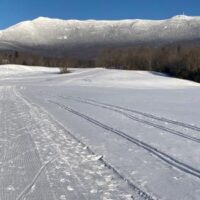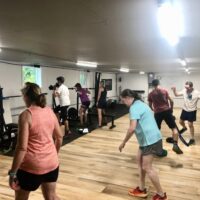The busy race season has ended, and we are in training limbo for a few weeks. There aren’t scheduled group training sessions, workouts, or races…and that’s ok! We work really hard and often have lots of structure for 11 or so months of the year, and if we don’t give ourselves a break in April it could be really difficult to stay on track and maintain motivation the rest of the year.
So, what is the recipe for April?
1. Take a break
Everyone has earned a physical and mental break from ski racing and traditional ski training (distance, intervals, hours, Strava, etc) whether the season was your most amazing ever, or one you’d like to improve on. There is no secret or special training that can be done in the first week or two of April that will make-or-break your upcoming season…unless, that is, you wind up getting injured (see the next point).
While World Cup athletes may take long vacations to the beach, you don’t need a full warm-weather destination to recover. But you should feel totally comfortable taking 1 week off of real training (go for a walk, go to the gym and spin while reading a book, or just catch up on some Netflix) followed by one week of very easy training (one day “on”, one day total rest).
It takes two weeks before most “de-training” sets in, meaning you are more than allowed to enjoy not being an athlete for a spell. In fact, it is better if you aren’t athletic at all for a bit!
2. Introduce other training, but do it slowly
I’m quick and definitive in my wariness around running track in the spring. Why? Going right from one race season to another is mentally challenging. Track season is short, meaning there’s a very short “building” period and a packed schedule of meets and competition.
Additionally, after not running much (if at all) over the winter months, the body is at extra risk for overuse injury if running is not introduced carefully and with purpose. Consider the following:
- Short distances at easy paces for a number of sessions. Think 3-4 miles at 10:00 – 12:00 min/mile pace for a week or two.
- Gradual increases…if you track your weekly mileage, stick to a 10-15% increase each week. This will seem small, but remember there is a LONG time between April/May and the winter race season of 2023/2024.
- Avoid running entirely on pavement, and incorporate gravel or trail running when possible. This is also a good time to review your current footwear and make sure you are running with the appropriate tools.
- Make sure on-foot workouts include structured warmups for hip mobility and strength. Check out the MNC band warm-up which for us is now a staple of running days. You can get these bands for cheap at Wal-Mart or the internet. Want more resistance band ideas?
3. Make time for strength training
- Include strength training as consistently as possible. 2x a week should be a bare minimum, with 3x a week ideal…this can mean 2 “traditional” gym sessions and one session focused on mobility, hip strength, and stability. Check out this playlist of at-home strength ideas, including this compilation of specific running injury-prevention exercises from Swedish physiologist Eric Borgesson.
4. Other sports!
- While track may not be the easiest transition from skiing, there are lots of other sports out there that can be engaging and a great diversion from skiing for a bit. MNC skiers have liked playing ultimate, joining the lacrosse team, or just embarking on some bike riding adventures.
- MNC Spring Training begins in mid-May, and this involves 1-3 days a week of mixed training. Typically we will do a running session one day (including lots of warmups and mobility), one day of rollerskiing in easy terrain focusing on technique basics, and one adventure day like hiking, nor-pining, or biking. We try to keep it very light in May, and then focus on more traditional training when June comes around.
5. Reflect and prepare
- The spring is a time for reflecting on the past season, and planning for the next. Did you fill out your training log? Look back on all sorts of workouts and races to indentify strengths and weaknesses to target going forward. Take a look at how you were feeling on certain days, weeks, or months and see if you notice any patterns. Reflect on your goal pyramid and see how things went.
- One suggestion before/during/after coach and athlete meetings would be to add a new tab to your training log and write down some basic thoughts upon this log reflection. Right after the season has ended is when you are most likely to remember specific details of sessions or races, and can immortalize them in your log.




Comments are closed.